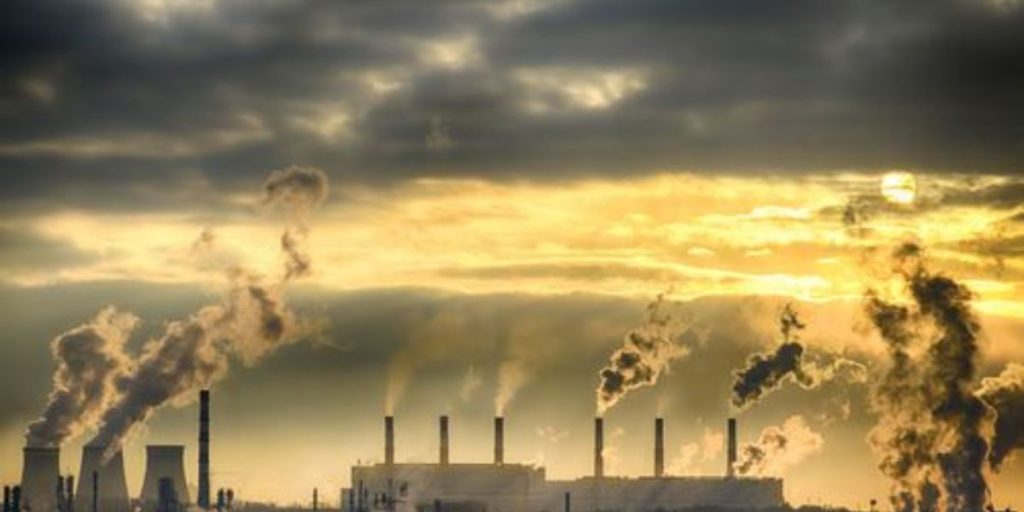Carbon emissions, a critical factor in the global fight against climate change, vary across the United States due to a combination of factors. While numerous states are making strides in reducing their carbon footprint, one state stands out for its significant contribution to greenhouse gas emissions.
The state with the highest total carbon dioxide emissions in the United States is Texas. It is known for its significant energy production and consumption, which contributes to its high emissions.
However, when considering per capita emissions, the state of Wyoming has the highest levels, while New York has the lowest. These variations are influenced by factors such as population density, industrial activity, and energy sources used within each state.
Reasons Behind Highest Carbon Emission in Texas
Texas, the largest annual emitter of carbon dioxide in the United States, emits 683.2 million metric tons of CO₂ annually, nearly twice as much as second-place California. If Texas were a nation, it would rank as the eighth-largest emitter in the world. Let’s explore the primary sources of these emissions:

- Energy Production: Texas is a major hub for energy production, including oil, natural gas, and coal. The combustion of fossil fuels in power plants, refineries, and industrial facilities releases significant amounts of carbon dioxide into the atmosphere.
- Transportation: Texas has a vast transportation network, including highways, railways, and airports. Vehicle emissions from cars, trucks, and airplanes contribute significantly to the state’s carbon footprint.
- Industrial Processes: Texas hosts various heavy industries, such as petrochemicals, cement, and steel production. These processes release CO₂ during manufacturing and chemical reactions.
- Oil and Gas Extraction: Texas is a leading oil and gas producer. Drilling, extraction, and refining activities emit substantial greenhouse gases, including carbon dioxide.
- Agriculture: Agricultural practices, such as livestock production and fertilizer use, contribute to emissions. Methane (a potent greenhouse gas) from cattle and rice paddies also indirectly affects Texas’ carbon footprint.
- Residential and Commercial Buildings: Energy consumption in homes, offices, and commercial buildings leads to emissions. Heating, cooling, and electricity usage contribute to the state’s overall carbon output.
Read More: This Texas Town is Known as the “Cowboy Capital of the World”
Texas Comparison in Carbon Emission to Other States
| State | Total CO₂ Emissions (million metric tons) |
| Texas | 683.2 |
| California | 358.5 |
| Florida | 227.8 |
| Pennsylvania | 204.6 |
| Ohio | 203.3 |
Texas leads in total emissions, followed by California, Florida, Pennsylvania, and Ohio. These figures highlight the significant impact of energy production and consumption in Texas on overall emissions. Efforts to reduce emissions in Texas are crucial for global climate action.
Read More: This is the Dirtiest City in Texas
Efforts and Initiatives Taken to Reduce Carbon Emission in Texas

- Wind Power Leadership: Texas has been a national leader in wind power capacity. The state has made significant investments in wind farms, harnessing its vast wind resources to generate clean energy. The growth of wind power has played a crucial role in diversifying the state’s energy mix.
- Solar Power Development: Texas has also been working on increasing its solar power capacity. Solar energy projects and installations have been expanding, contributing to a more diverse and sustainable energy portfolio.
- Energy Efficiency Programs: Various programs and initiatives have been implemented to promote energy efficiency across different sectors. These efforts include initiatives to improve the energy efficiency of buildings, appliances, and industrial processes, ultimately reducing overall energy consumption and associated emissions.
- Electric Vehicles (EVs) Promotion: Texas has been taking steps to encourage the adoption of electric vehicles. This includes the development of EV charging infrastructure, incentives for electric vehicle purchases, and efforts to raise awareness about the environmental benefits of electric transportation.
- Carbon Capture and Storage (CCS): Some initiatives in Texas have explored carbon capture and storage technologies. These projects aim to capture carbon dioxide emissions from industrial facilities and power plants, preventing them from entering the atmosphere.
- Grid Modernization: Upgrading and modernizing the state’s power grid to enhance efficiency and reliability. A smarter and more resilient grid can accommodate renewable energy sources more effectively and reduce transmission losses.
Also, Read:
Conclusion
While Texas holds the title of the US state with the highest carbon emissions, it is crucial to recognize ongoing efforts to transition to cleaner energy sources and promote sustainability. As the state continues to grapple with the complex interplay of industrial growth, energy demand, and environmental responsibility, the path toward a greener future remains a dynamic and evolving journey.
SOURCE: downtoearth.org.in, texastribune.org, theguardian.com